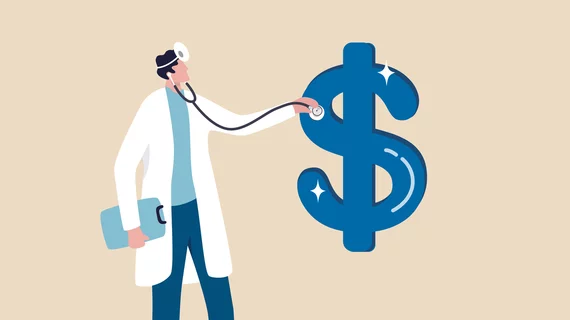Compensation keeps climbing in cardiology, electrophysiology, heart surgery
Cardiology salaries have continued to climb in 2024, according to a new survey from the American Medical Group Association (AMGA). Among general cardiologists, for example, median compensation jumped nearly 8% from $552,000 in 2023 to $596,000 in 2024.
The 2024 AMGA Medical Group Compensation and Productivity Survey includes feedback from more than 189,000 healthcare providers representing nearly 200 different specialties. In 2024, compensation for primary care providers increased 3.6% compared to 2023. Medical and surgical specialties saw compensation go up 5.1% and 5.5%, respectively, and the year-over-year increase for radiology, anesthesiology and pathology was 5.8%.
“We are seeing significant productivity increases, which, in essence, drove the compensation increases across specialties,” AMGA Consulting President Fred Horton, MHA, said in a statement.
A closer look at cardiology salaries in 2024
Diving back into cardiology, most subspecialties saw considerable growth in compensation from 2023 to 2024. Echocardiography lab and nuclear cardiology (12.4%), cardiothoracic surgery (11.2%), cardiovascular surgery (10.5%), interventional cardiology (9.7%), electrophysiology (8.2%), general cardiology (7.9%) and pediatric/adolescent cardiology (5.7%) all experienced healthy year-over-year increases, outpacing primary care providers by a significant margin.
Compensation for advanced heart failure and transplant cardiologists also increased in 2024, but only by 2.9%. Cardiothoracic surgeons focused on pediatric patients, meanwhile, saw their median compensation decrease 2%; it went from $899,000 in 2023 to $881,000 in 2024.
Out of all of cardiology’s subspecialties, the highest 2024 salary belongs to cardiovascular surgeons ($911,000). The lowest, on the other hand, belongs to pediatric/adolescent cardiologists ($356,000).
Changes in work RVUs in cardiology
The AMGA survey also explored work relative value units (RVUs), which went up in 2024 for every cardiology subspecialty. Among general cardiologists, for example, median work RVUs increased from 8,368 in 2023 to 9.010 in 2024, a difference of 7.7%. This resulted in a compensation/work RVU ratio of 2.9% for general cardiology.
Echocardiography lab and nuclear cardiology saw a large year-over-year jump in work RVUs (15.2%), explaining that group’s notable salary bump during the same time period. Even with the higher salaries in mind, however, the compensation/work RVU ratio for that group was -3.2%.
On the other hand, advanced heart failure and transplant cardiologists saw an even bigger increase in work RVUs (18.9%), but that was not associated in any way with higher salaries. This resulted in a compensation/work RVU ratio of -16.4%.
The smallest increase in work RVUs was seen in the pediatric/adolescent cardiologist group; they went up just 0.5% year over year.
Many salary figures listed above were rounded for the sake of simplicity. Click here for additional details from AMGA.

